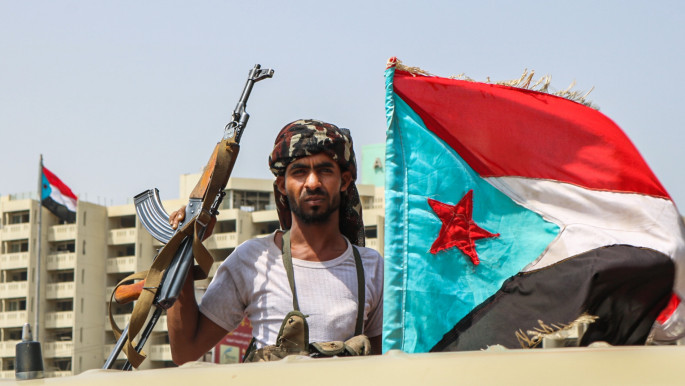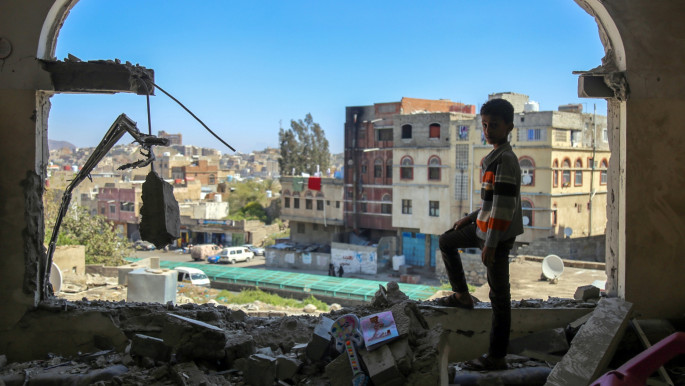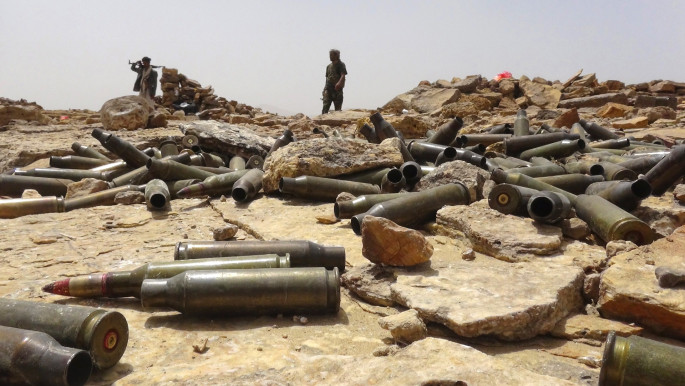Yemen's Mahra: An oasis of calm threatened by geopolitical rivalries
But this oasis of calm, which has provided a safe haven for some 250,000 internally displaced people, is threatened with instability as Saudi Arabia increases its military presence and plays an increasingly active role in the governorate's affairs, much to the chagrin of local residents who have protested against their involvement.
With barely 120,000 inhabitants, Yemen's most easterly province has for several years now been the subject of interest for Saudi Arabia and the United Arab Emirates (UAE) as part of their military intervention in the country.
The UAE's efforts between 2015 and 2017 to build influence in the governorate and create an elite force were eventually rebuffed by local opposition to foreign interference. Mahris have a unique history of running their own affairs as well as a common vision of sovereignty within a federal system that has kept them remarkably unified.
According to a report by the Sana'a Center for Strategic Studies, Saudi Arabia "has leveraged its sway over the internationally recognized Yemeni government to force the replacement of uncooperative officials in Mahra and the appointment of pliant replacements". In late 2017, "Riyadh began deploying armed forces in Mahra under the pretext of combating smuggling of weapons to the Houthis across the Omani border," the report added.
 |
Mahra, Yemen's second largest but least populated Yemeni governorate bordering Oman, has managed to avoid the ravages of war which have devastated the rest of the country |  |
Saudi Arabia controls the governorate's airport, border crossings and main seaport and has established more than a dozen military bases around the province where it has stationed thousands of its own troops and Yemeni proxy forces imported from other southern governorates.
"The deep-seated sense of local identity has spurred a growing opposition movement to the Saudi presence in Mahra – an opposition movement Oman has actively supported," the Sana'a Center report said. "While this opposition began as peaceful demonstrations, there have been clashes with Saudi forces, with the Saudi air force carrying out airstrikes against Mahri tribesmen."
 |
|
| Read more: A house divided: The battle for Yemen's south |
The Saudis have now turned the airport into a military base with administration offices. They have also established religious centres and brought imams to speak in the mosques.
The Mahri people did not want a repeat of the Southern Transitional Council's (STC) takeover of Socotra in their governorate and when the head of the General Council for Mahra and Socotra Abdullah bin Isa, the son of the last sultan of Mahra, did not denounce the takeover he was replaced with Sheikh Mohammed Abdullah.
The Mahra Peaceful Sit-in Committee was set up in 2018 to demonstrate against the presence of the Saudis and Emiratis. Led by an important tribal leader and ex-deputy governor of Mahra, Ali Salman Hurayzi, the committee has implemented water, electricity, and road building projects.
Even the internationally recognised government has commented negatively about the coalition's presence in Mahra. "The Yemeni government wanted our allies in the coalition to march with us north, not east," Interior Minister Ahmed al-Misri said on 5 May, 2019, adding that the partnership between the Hadi government and the coalition was intended to combat the armed Houthi movement, not manage "liberated" areas.
 |
Mahra now faces destabilisation due to a geopolitical struggle for influence involving Saudi Arabia, the United Arab Emirates, and Oman |  |
Ahmed Naji, a non-resident scholar at the Malcolm H Kerr Carnegie Middle East Centre in Beirut, attributed the peace and stability which prevailed in Mahra before the start of the war to a code of conduct accepted by the tribes: they agree that when an outsider engages in any direct aggression against a Mahri tribe or individuals the Mahris regardless of tribal affiliation close ranks against the outsider. When armed conflict occurs, the spoils do not go to the victor. Peace agreements are the preferred means for solving disputes and there is a very effective tribal mediation process if a conflict occurs.
"This can be seen in other areas of Yemen but not to the same extent as in Mahra which tended to be relatively peaceful," Naji said, speaking at a zoom conference on Mahra in late March organised by the British-Yemeni Society.
"The regional actors are in Mahra today due to the disintegration of the central government. Before 2015 most of the Mahri tribes were relying on the fishing industry, animal husbandry and trade between Oman and Yemen and Saudi Arabia and Yemen. When the blockade started in 2015 the governorate witnessed new economic dynamics," he added.
 |
|
| Read more: How the odds were stacked against Yemen's Arab Spring revolution |
"It is in the far east away from the military fronts in the north and south and many people came to Mahra to start businesses. But there is an unhealthy economy related to the war economy. The Saudis have recruited thousands of tribesmen and pay them a monthly salary."
Mahra has historically been inhabited by the Mahri people, a South Arabian tribe with its own language. The Mahri linguistically, culturally, and genetically have more in common with the Socotri people of Socotra and the Dhofari people of Oman's neighbouring Dhofar region than they do with most Yemenis. Some historians believe they could be the descendants of the ancient Ad Kingdom, credited as being the first people to domesticate camels.
Mahra existed as a semi-autonomous Mahra Sultanate from 1432 to 1967 and included the present Mahra Governorate, as well as the island of Socotra. In 1967 at the end of the British colonial era Mahra became a part of independent South Yemen, which made serious attempt to 'Yemenise' it.
 |
The emergence of open conflict with external powers backing rival sides would represent a dramatic setback |  |
To date, Yemen's most easterly and isolated governorate has been spared the horrors of war experienced in much of the rest of the country, but it now faces destabilisation due to a geopolitical struggle for influence involving Saudi Arabia, the United Arab Emirates (UAE) and Oman.
 |
|
| Read more: Why the battle for Marib could determine Yemen's future |
Muscat has since the 1970s regarded Mahra as a natural extension of its national security sphere. In subsequent decades, Riyadh pursued efforts to build an oil pipeline through the governorate to the Arabian Sea and this project is being mooted once again.
Abu Dhabi's interests in Mahra are an extension of its support for the STC and its interest in Yemen's coastline to control south Yemen's ports, establishing a wider sphere of influence across the Horn of Africa, and bolstering its global maritime trade through the Indian Ocean and Bab el Mandeb.
As the report by the Yemen Center for Strategic Studies points out, it is not in the interest of any party to see Mahra spiral into chaos. "After managing to mostly avoid the degree of upheaval the rest of Yemen has experienced, the emergence of open conflict with external powers backing rival sides (as is visible in many other parts of the country) would represent a dramatic setback. Saudi Arabia in particular seems likely to continue efforts to cement influence in Mahrah and undercut local opposition to its presence, but the situation remains too volatile to be sure it can manage this with enough restraint to avoid an escalation of armed violence."
Speaking at the British-Yemeni Society conference, Noel Brehony, the former first secretary at the British Embassy in South Yemen, said he believes the Saudis will stay in Mahra until the war ends and there is a stable government. "Then will they revert to their former policy of trying to exercise influence through individuals they know," he said.
Karen Dabrowska is a London-based freelance journalist focusing on the Middle East and Islamic Affairs. She is also the author of ten books. Her latest, a biography, 'Mohamed Makiya: A Modern Architect Renewing Islamic Tradition' will be published by Al-Saqi in July.
Follow her on Twitter: @KarenDabrowska1





 Follow the Middle East's top stories in English at The New Arab on Google News
Follow the Middle East's top stories in English at The New Arab on Google News


